The AMD Threadripper 2 Teaser: Pre-Orders Start Today, Up to 32 Cores
by Ian Cutress on August 6, 2018 9:00 AM ESTX399 Motherboards: The MSI X399 Creation
For the motherboard situation, AMD clarified that all motherboards on the market today will be able to run the new 250W processors. The differences will be in how well each motherboard will be able to overclock, with AMD citing that the newer models and revisions should perform better, given that they were built with a higher power rating already in mind. Boards like the X399 Creation should also help in pushing the first generation Ryzen Threadripper.
Box. Has board inside.
As noted back at Computex, the MSI X399 Creation is a very visually busy motherboard. Lots of angles, and lots of shades of grey. I know it is customary in some Asian languages and magazines to be very dense, and this is kind of what that looks like. Most of the time I prefer a simpler, elegant design. This design does not scream elegance.
The key headline for this motherboard is the power delivery. MSI has put 16 phases on the processor, and another three for "uncore" portion of the chip, or as AMD calls it, the SoC. In order to fit them in, the DRAM slots are slightly further down than average, but it also allows MSI to put in a larger heatsink, which also connects to the heatsink near the rear panel of the board.
In case you forget the name: Creation.
Storage on the motherboard comes in two forms: eight SATA ports, and seven M.2 drives. That is not a typo: MSI has enabled this motherboard with seven M.2 slots. Three come from on the board, and are found under the chipset heatsink. Here are two of them:
The other four comes from an add-in PCIe card. We also saw this at Computex, and it uses a dual-slot design. It looks like a GPU:
But inside are four M.2 slots, with thermal pad on the heatsink to assist with cooling.
MSI states that this was built specifically with Threadripper in mind, so I’m going to annoy our SSD reviewer, Billy Tallis, to hand over a few more drives.
Also on the board is an extensive rear panel, with USB 3.1 ports, USB 3.0 ports, Ethernet, and Wi-Fi:


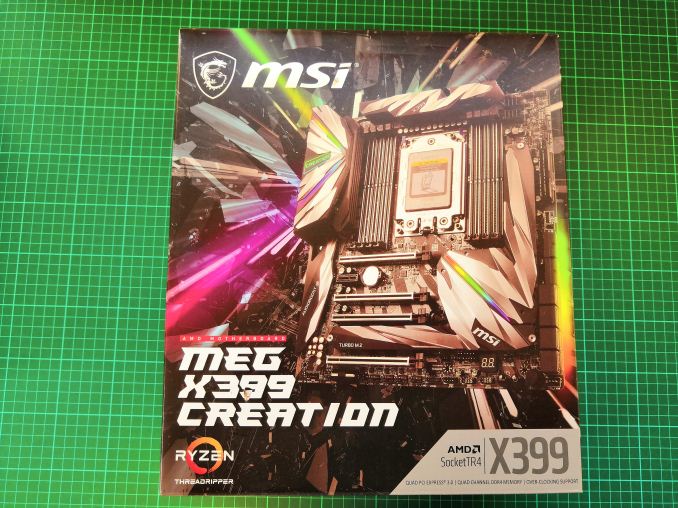
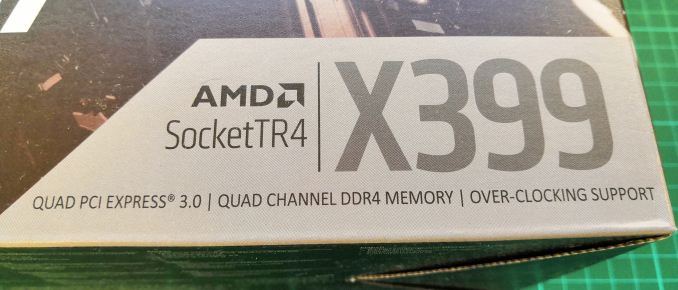
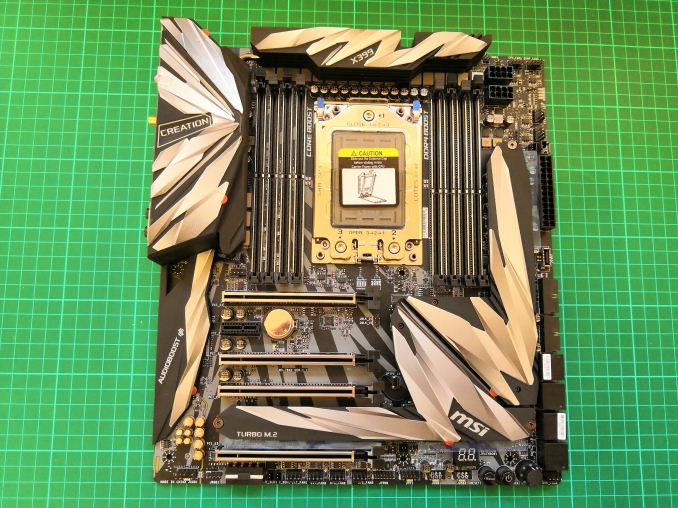
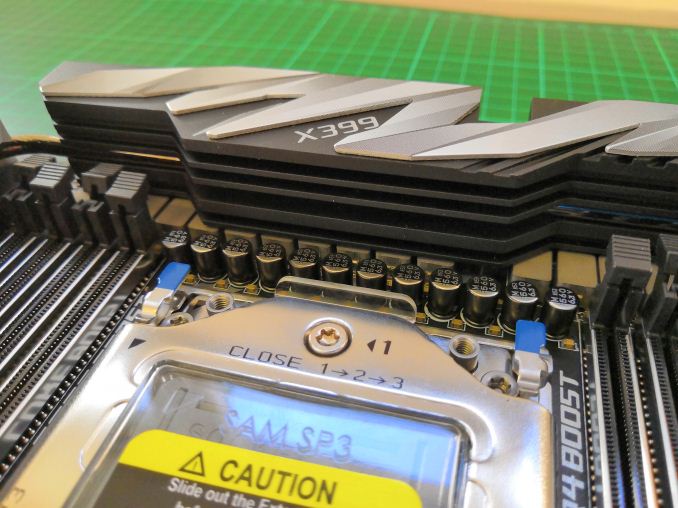


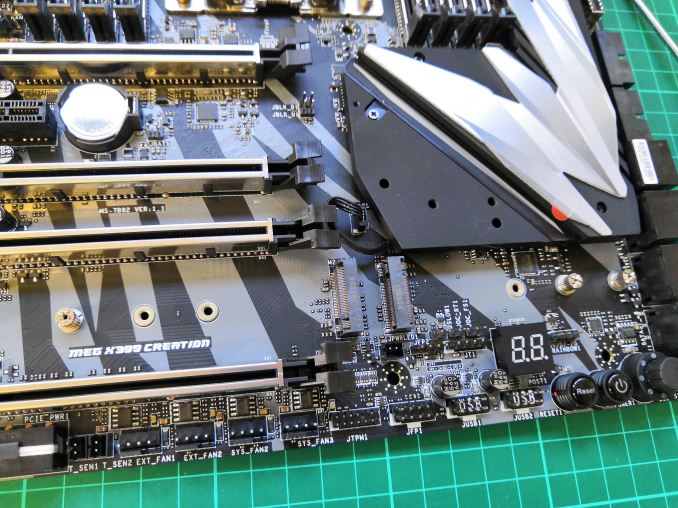
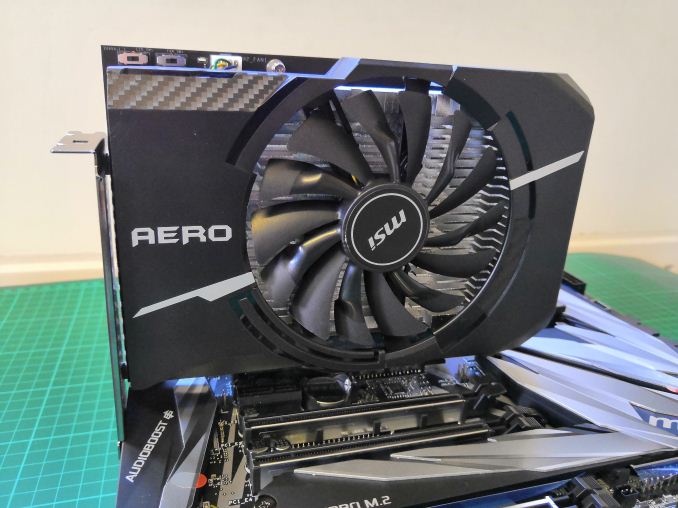
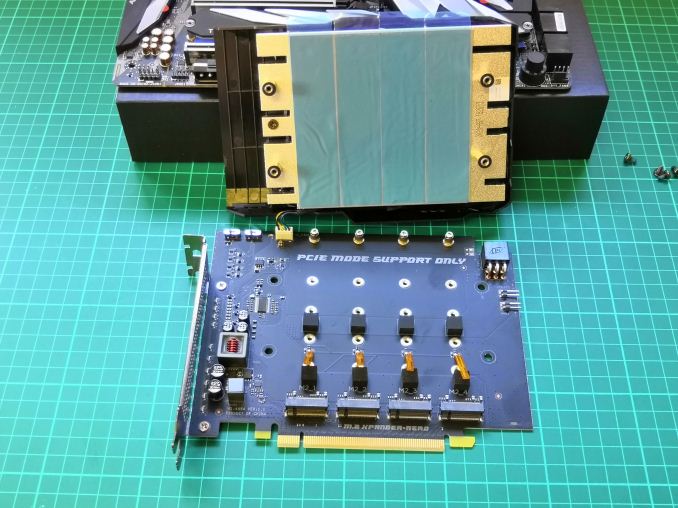
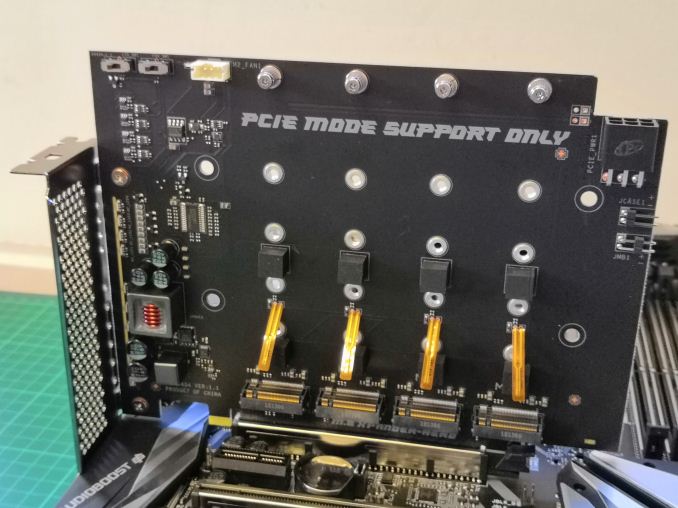

_thumb.jpg)
_thumb.jpg)
_thumb.jpg)
_thumb.jpg)
_thumb.jpg)
_thumb.jpg)








101 Comments
View All Comments
edzieba - Monday, August 6, 2018 - link
The gate thickness limit was hit around Sandy Bridge time and has stuck even with process node scaling. "Moar Cores" scaling was chopped off at the knees by GPGPU. There's just not many places to go to gain performance without massive power consumption increases (and even that hits areal power density limits as overall process scale shrinks).mapesdhs - Monday, August 6, 2018 - link
The irony of all this is that threaded support within application software is generally still pretty terrible, with many pro apps still only using one core. If anything there's much more to gain with better written software, but good programmers are expensive, and these days grud knows where they'd come from given the woeful education standards of many modern edu places, at least in the West anyway. Probably have to poach them from south east Asia, Israel, etc.Alaa - Monday, August 6, 2018 - link
Never heard that good programmers exist in Israel.edzieba - Monday, August 6, 2018 - link
It's not really a case of 'just program better', dual cores have been commonplace for a decade now: any workload that could be easily threaded has long ago taken those double-performance gains (and quadruple for the now ubiquitous quad-cores). Many tasks simply do not subdivide easily in a way conducive to threading (no good splitting into a bunch of sub-tasks if all depends on results of the previous task). Unlike HPC workloads that fall under Gustafson's Law scaling, desktop workloads are firmly in Amdahl's Law territory.jospoortvliet - Tuesday, August 7, 2018 - link
I would say party of the issue is the tools, most programming languages still have not added much multithreaded tools. Rust and go are of course designed for it but they will take time to be adopted. Nice to see Firefox leading here!hetzbh - Monday, August 6, 2018 - link
Hmm, lets see..1. They call the TR 2990WX - "for workstation" solutions, yet it doesn't have even a shred of remote management neither on the Chipset nor any motherboard...
2. Pre sales are starting today, yet performance benchmarks are not allowed to be published today, so buy those CPU's based on ... what? hype?
Intel999 - Monday, August 6, 2018 - link
@hetzbhWhile early adopters have been known to buy based on hype in the past, they only need to use common sense to pull the trigger on the 2990WX.
Only someone as dense as a rock won't be able to see that they will be getting double digit percentage increases over an Intel alternative that still, comically, costs $200 more.
Oxford Guy - Wednesday, August 8, 2018 - link
Hype? Not really.GPUs often come in around MSRP for preorders then, when things like Ethereum hit, those who preordered saved money. They also avoided shortages.
Plus, there is Ebay to sell on if the item doesn't measure up to your expectations. People will buy anything on Ebay for high prices.
Cooe - Monday, August 6, 2018 - link
CPU's are ALWAYS released for pre-order before review embargo's left. AMD AND Intel. Nothing new / worth complaining about here folks.Oxford Guy - Wednesday, August 8, 2018 - link
And, people who buy prerelease items can most likely recoup their money by selling on Ebay if the CPUs or GPUs don't turn out to be all that great.